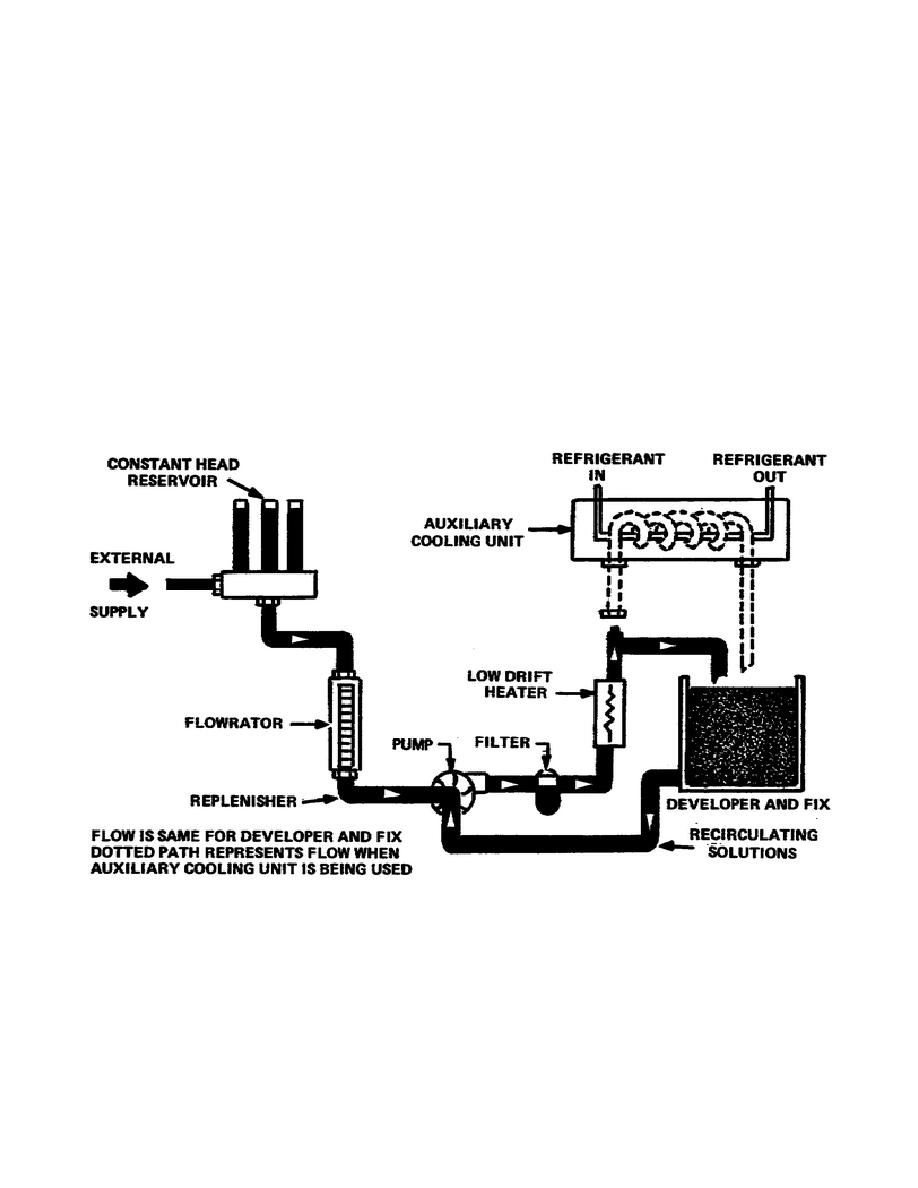
5.
Temperature control. Controlling the temperature of your chemistry is very important to ensure that your
materials are processed properly. This is accomplished by a temperature control unit referred to as a heat
exchanger.
a. The heat exchanger incorporates refrigeration coils and heating elements. The developer and fixer are
pumped through separate exchangers. The chemicals are adjusted to the proper temperature and reintroduced to
the processing machine.
b. A temperature sensing probe, located in the processing tank, monitors solution temperatures and
transmits this information to the solution thermostats. If solution temperature is too high, the refrigeration
compressor is turned on and this drives the coolant through coils within the heat exchanger and cools the solution.
c. If the solution in the tank is too cold, the heaters located in the heat exchanger are turned on. This
heats the solution. The operator sets the solution thermostats at the desired temperature and the solution
temperature is automatically controlled.
Figure 1-9. Typical recirculation system
11



 Previous Page
Previous Page
